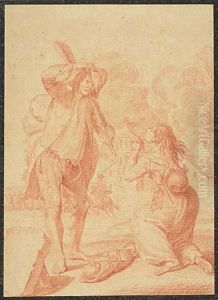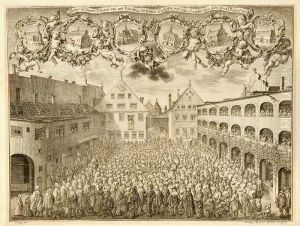Philip Andreas Kilian Paintings
Philip Andreas Kilian was a notable German engraver born in 1714 in Augsburg, a city with a rich tradition in the arts, particularly in the field of printmaking. He was part of the Kilian family, a dynasty of engravers that played a significant role in the German engraving scene during the 17th and 18th centuries. His father, Georg Philipp Kilian, was also a distinguished engraver, ensuring that Philip Andreas was introduced to the craft at an early age. This familial environment nurtured his talent, allowing him to develop a sophisticated style that combined technical precision with artistic expression.
Despite the limited information on his early training, it is evident that Kilian's skills were honed within a vibrant artistic community in Augsburg, which was then one of the foremost centers for printmaking in Europe. He specialized in portrait engraving, contributing significantly to the genre by capturing the likenesses of prominent figures of his time. His works were not only appreciated for their likeness but also for the way they encapsulated the social and cultural ethos of the period.
Throughout his career, Philip Andreas Kilian's engravings were highly sought after by publishers and collectors alike, serving as illustrations for books and standalone pieces. His ability to render texture, fabric, and facial expressions with fine lines and meticulous detail made his works stand out. Notably, his portraits served as historical documents, immortalizing the visages of European nobility, scholars, and other significant personalities of the 18th century.
Kilian's contribution to the art of engraving was recognized by his contemporaries, and his legacy persisted even after his death in 1759. Though the specific details of his personal life and training remain somewhat obscure, his surviving works continue to be studied and admired for their artistic merit and historical value. As a member of the Kilian family, Philip Andreas played a crucial role in maintaining and enhancing the reputation of Augsburg as a center for high-quality engraving during a period when the demand for such work was high across Europe. His death marked the loss of a significant figure in the world of engraving, but his engravings ensure that his artistic legacy endures.

